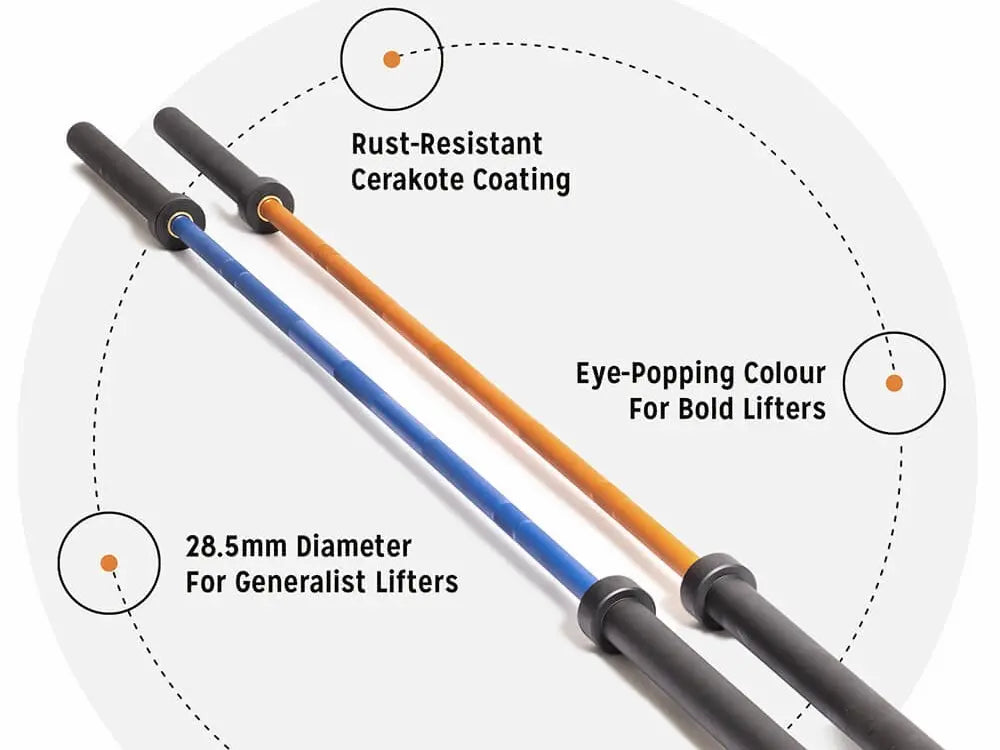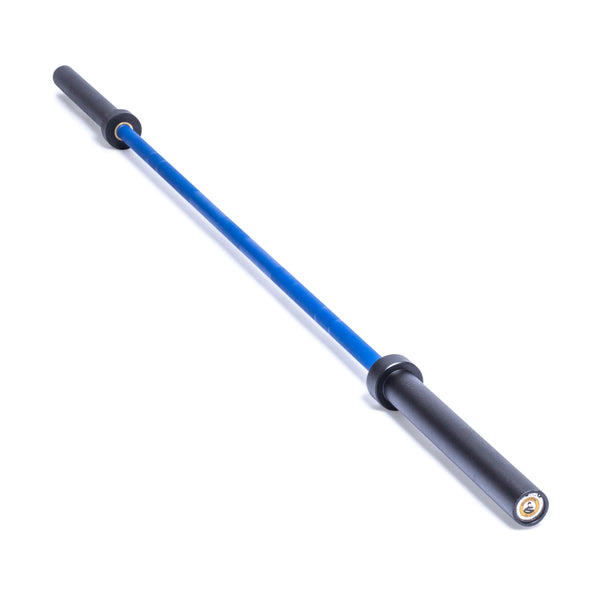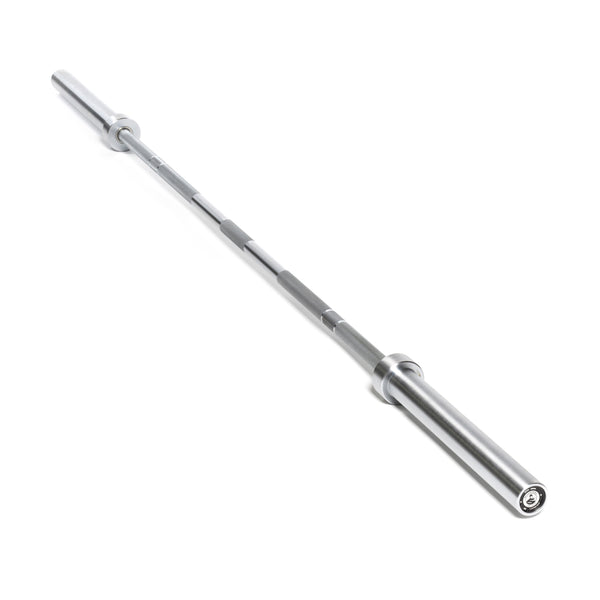- What is a Cerakote barbell?
- How durable is Cerakote?
- How to clean a Cerakote barbell?
- Cerakote vs stainless steel barbell
Let’s jump right, so you can see the magic of this coating!
A cerakote barbell is an Olympic barbell that’s been coated in a ceramic polymer coating called “Cerakote”. Cerakote is known for its abrasion and rust resistant properties and its ability to come in many different colours. Originally, it was a coating that firearm owners began coating their guns with. This way, they’d be more resistant to rust and abrasion when out in the woods or at the gun range. And it was only a matter of time before some brilliant whipper-snapper decided to put it on a barbell.
Lots of people like to uphold Cerakote as the ultimate “one-coating-to-rule-them-all”. While there’s some truth to that, Cerakote isn’t invincible. And so, let’s dive into the two main factors we’ll use to judge Cerakote’s durability: (1) abrasion resistance and (2) rust resistance. Abrasion is when something is being scraped or worn away.
And when it comes to barbells, abrasion can rear its ugly head with any metal-on-metal contact. Like, if you hypothetically were to use your $300+ cerakote barbell in a pair of j-cups that don’t have a protective plastic lining, and end up scratching your bar. Seriously, don’t be THAT guy.
But let’s give Cerakote some credit, because it appears to be in the upper half for abrasion-resistance. However, don’t use that as an excuse to allow metal-on-metal contact with your bar. And if you do decide to roll the dice, then don’t go complaining about the Cerakote scratching off your barbell on social media — deal? Where Cerakote really shines though, is in its rust-resistance.
According to a test done by NIC Industries, the parent company who (literally) invented Cerakote, the Cerakote coating came out on top when pitted against 8 other coatings. Almost all the coatings rusted within just 48 hours of being put in a salt chamber and the test finally “...concluded at 2,034 hours when Cerakote showed initial signs of corrosion.”
Clearly, the Cerakote coating isn’t rust-proof. But it’s WAY better than other coatings — and appears to annihilate them in a head-to-head competition. And while this coating was originally intended for protecting firearms from rust and abrasion, we feel that this test is still a great indicator for its ability to protect a barbell. You’ll need a few things to clean a cerakote barbell. Here’s the full list:
- Nylon bristle brush (do NOT use a metal brush!)
- 3-in-1 oil
- Old rag
- Microfiber towel
- Disposable gloves
First, remove your barbell from your rack. The last thing you want is to clean off your bar and have dried sweat, dead skin and oil drippings all over your lifting area. Ideally, lay it on top of an old towel or a long piece of cardboard. Or, bring it outside to clean if weather permits.
In order to clear your cerakote barbell, it’ll need to be raised up off the floor or ground. You can use some 4x4 pieces of wood, or just put a spring collar on each sleeve to allow you to prop up the bar. Then put your gloves on, ‘cause it’s time to get to work.
Take your nylon bristle brush and scrub the shaft of the barbell. This will help loosen any material that’s been packed into the knurling over time. Next, apply the 3-in-1 oil in streaks along the entire shaft of the barbell. Feel free to stick with a lighter coating for a quick touch-up, or lather it on thick if you’ve got some seriously rusted areas.
Now, take your nylon bristle brush again and firmly work the oil in by scrubbing back and forth. The lubricant (and scrubbing action) will help lift rust and any other gunk that’s been embedded into the knurling. Heads up — it's easier to work in 12” sections at a time, to ensure that each section gets a consistent focus. Lastly, whip out that old rag and run it along the shaft of the barbell to wipe up all the oil, chalk and grime that you’ve loosened with the brush.
A final wipe using a clean microfiber towel will pick up any missed debris or leftover little fuzzies. These two barbell types are often labeled as the crème de la crème of barbells. Without a doubt, stainless steel comes out on top for resisting abrasion.
Although Cerakote is durable, it can still be scratched off which will expose the bare steel underneath. Stainless steel, however, has no coating that can be scratched off. This makes it the better choice for this purpose. Based on the test done by NIC Industries, it appears that Cerakote is the winner here. Although it’s just a coating over top of steel, it seems to have done a better job of resisting rust than stainless steel did — which rusted in just 48 hours.
On a cerakote barbell, the coating ends up filling in a little bit of the knurling. Although it’s pretty minimal, this means that if you value an aggressive knurl, then a stainless steel barbell is a better choice. That being said, you might be able to get the best of both with a cerakote powerlifting bar… though it will never truly be as good as the knurling on a stainless steel barbell.
Stainless steel barbells almost universally cost more than a cerakote bar. This is because the rust-resistant properties are literally part of the steel used, instead of just a coating on top. As a result, it costs more. 🙁 It’s hard to beat the durability of a cerakote barbell. Being rust-resistant and available in many colours, it can be a vibrant and low-maintenance tool to add to your home gym. If you’re in the market for one, click the link below to find out more!



